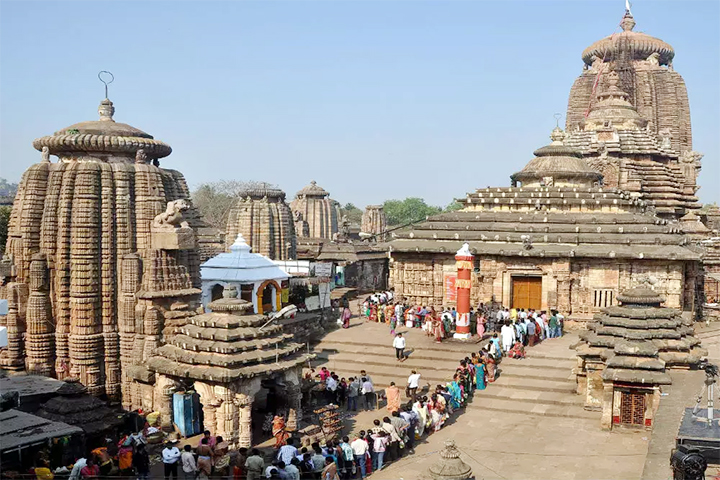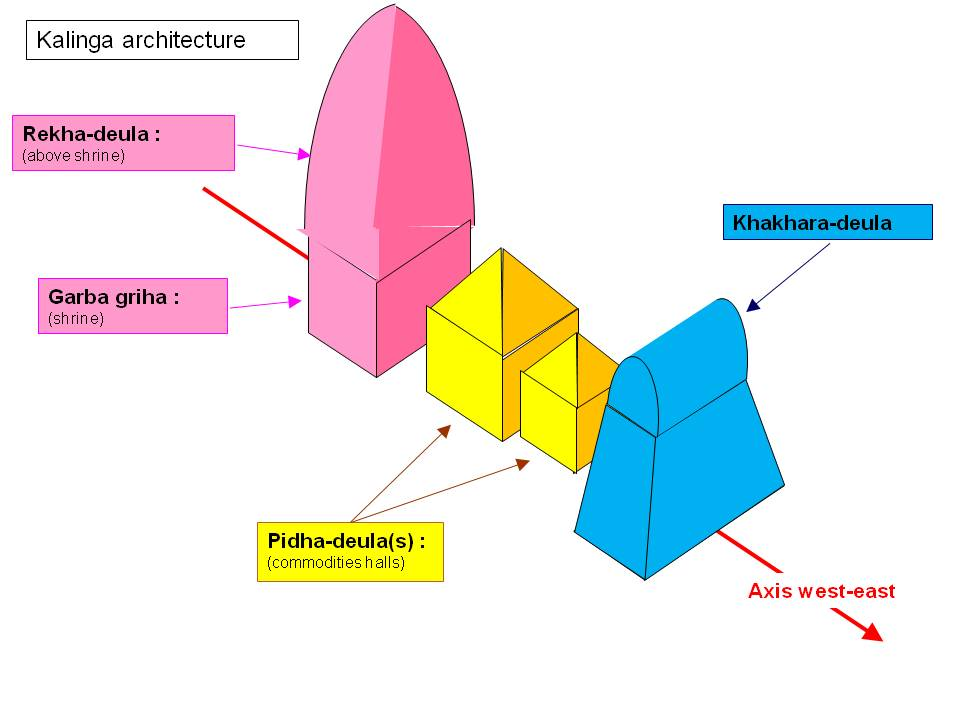Lingaraja Temple
Why in News
Recently, the Odisha Government has restricted public entry into the Lingaraj Temple after four sevayats (priests) tested positive for the novel coronavirus.
- In August 2020, the government had decided to give a facelift to the temple, akin to its pre-350-year structural status.
Key Points
- Lingaraj Temple, built in 11th century AD, is dedicated to Lord Shiva and is considered as the largest temple of the city Bhubaneswar (Odisha).
- It is believed to have been built by the Somvanshi King Yayati I.
- It is built in red stone and is a classic example of Kalinga style of architecture.
- The temple is divided into four sections - Garbha Griha (sanctum sanctorum), Yajna Shala (the hall for prayers), Bhoga Mandap (the hall of offering) and Natya Shala (hall of dance).
- The sprawling temple complex has one hundred and fifty subsidiary shrines.
- Lingaraj is referred to as ‘Swayambhu' – self-originated Shivling.
- Another important aspect of the temple is that it signifies the syncretisation of Shaivism and Vaishnavism sects in Odisha.
- Perhaps the rising cult of Lord Jagannath (considered an incarnation of Lord Vishnu) which coincided with the completion of the Lingaraja Temple had a role to play.
- The presiding deity in the Temple is known as Hari-Hara; Hari denotes Lord Vishnu and Hara meaning Lord Shiva.
- The temple is out of bounds for non-Hindus.
- The other attraction of the temple is the Bindusagar Lake, located in the north side of the temple.
- On the western banks of Bindusagar, lies the garden of Ekamra Van named after the Hindu mythological texts where Bhubaneswar the capital city of Odisha was referred as Ekamra Van or a forest of a single mango tree.
- Other Important Monuments in Odisha:
Kalinga Architecture
- About:
- The Indian temples are broadly divided into Nagara, Vesara, Dravida and Gadag styles of architecture.
- However, the temple architecture of Odisha corresponds to altogether a different category for their unique representations called Kalinga style of temple architecture.
- This style broadly comes under the Nagara style.
- The Architecture:
- In Kalinga Architecture, basically a temple is made in two parts, a tower and a hall. The tower is called deula and the hall is called jagmohan.
- The walls of both the deula and the jagmohan are lavishly sculpted with architectural motifs and a profusion of figures.
- The most repeated form is the horseshoe shape, which has come from the earliest times, starting with the large windows of the chaitya-grihas.
- It is the deula which makes three distinct types of temples in Kalinga Architecture:
- Rekha Deula.
- Pidha Deula.
- Khakhara Deula.
- The former two are associated with Vishnu, Surya and Shiva temples while the third is mainly with Chamunda and Durga temples.
- The Rekha Deula and Khakhara Deula houses the sanctum sanctorum while the Pidha Deula constitutes outer dancing and offering halls.
